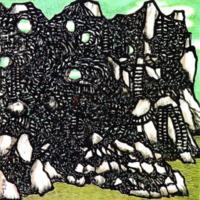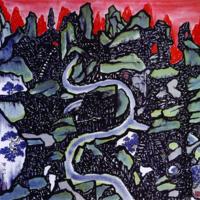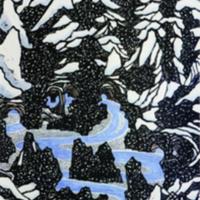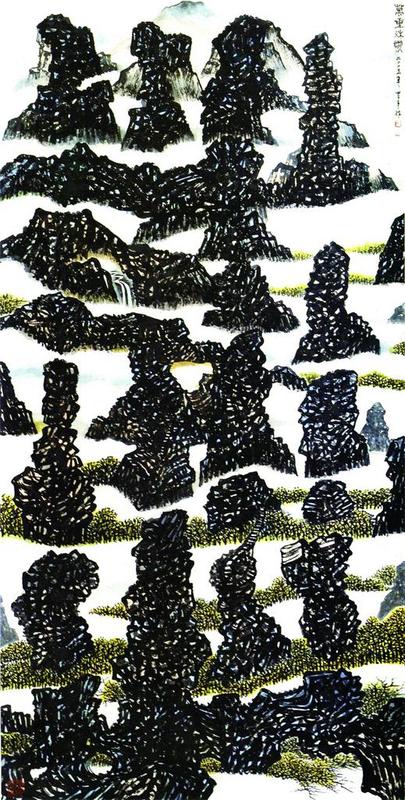Metaphysical landscapes with rocks
"The rock for me is a very important subject, because rocks can symbolize a lot of things, and at the same time it can satisfy the need to paint abstractly. You see, the Platonic idea of the Ideal world and then the Real world doesn't work in the Chinese context, but when you introduce the rock, it is something concrete, in our world, but at the same time the rock itself is purely abstract; it will present nothing but itself. If you wanted, you could do a study of rocks painted by Chinese painters in the last 500 years: amazing things would result. But you know, I do these self-portraits with broken rocks; I introduce the new ideas like the meteor or orbits or space, and I try to update the rock tradition in the 20th century world."
—Lo Ch’ing, 2015
Rather than capturing the real, external world, Lo captures the inner feelings, that is, the inner temperament of humankind, through his metaphysical landscapes with rocks. Rocks have been one of Lo Ch’ings preferred subjects due to their abstract quality and the long history of rock appreciation in China, which starts from the Song dynasty. There were special rules or principles that guided artists and connoisseurs on how to research and appreciate rocks, and the novelty of the rock’s appearance was considered aesthetically paramount to its significance. The rock is meant to be respected and appreciated as it is, even if it obscures the scenery behind it.
In Fathomless spring water and Plowing the summer heat, the massive rocks with their concrete quality dominate the whole metaphysical landscape. The natural holes of the rocks serve as roundel windows providing access to the spring and summer scenery behind. The bold abstract lines woven into the surface of the rocks create small, narrow passageways for people who would visit the mountains during this season. The rocks rendered in Ten thousand autumn clouds and Evening snow on the riverbank appear to float like meteorites and create a surrealistic and sublime atmosphere. The metaphysical rocks peek out from the dense autumn clouds and the evening snow, creating a space that forms part of a clandestine paradise, probably inhabited by immortals or deities.







